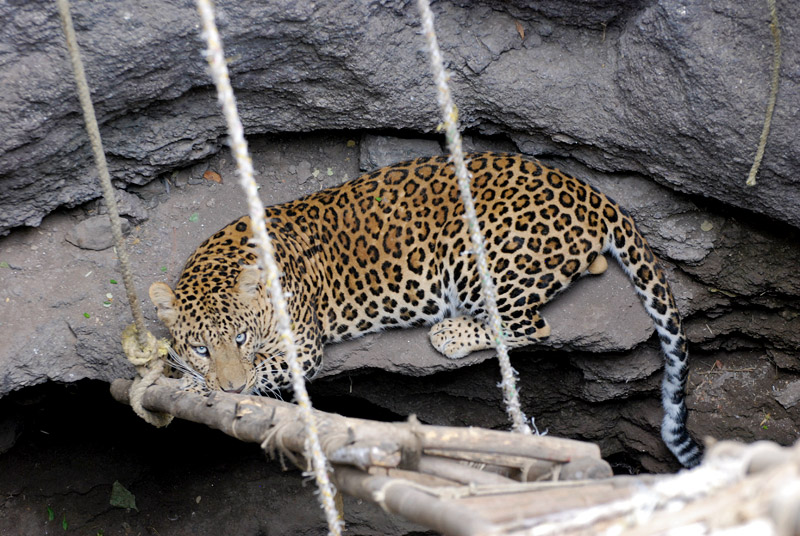
Chosen as 'Picture of the Week'
Science is helping track the movement of leopards in human-dominated landscapes. They can easily travel 120 km in 3-weeks or so, which highlights the need for maintaining corridors as well as social acceptance of these animals when they are outside protected areas.
This leopard chased a village dog and fell into a percolation well in Takli Dokeshwar village, Ahmednagar district. These percolation wells which dot the landscape are at ground level without a parapet wall (and mostly surrounded by shrubbery) and it is common for leopards to fall in them. The leopard (named Ajoba by the study team; codenamed 5863) was captured with the help of a ladder (that led to a cage) and then fitted with a GPS+ collar. It was released 60km away in the densely forested Malshej Ghats.
Five leopards (3 males and two females), all trapped in human-dominated areas between 1 May 2009 and 21 January 2010 in the Nashik Circle of Western Maharashtra were fitted with Vectronics (Vectronics aerospace GPS Plus I) collars. This was a collaborative to study leopards using telemetry to understand how they live among humans. All the animals fitted with collars were primarily living / caught in human-dominated areas.
Vidya Athreya — a wildlife scientist who leads the study — expected the leopard to come back to where it was captured but instead it went straight west to Mumbai’s Sanjay Gandhi National Park crossing the Mumbai — Agra National Highway 4 and Kasara railway station. 5863 had covered 120+ km in about 25 days!

 CI is a non-profit, non-commercial portal that aims to facilitate wildlife and nature conservation by providing reliable information and the tools needed to campaign effectively.
CI is a non-profit, non-commercial portal that aims to facilitate wildlife and nature conservation by providing reliable information and the tools needed to campaign effectively.
Older Comments 1
great work by rescue team